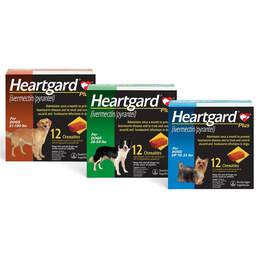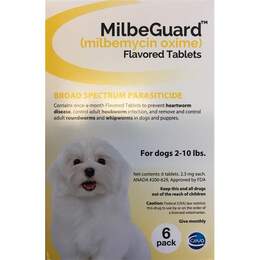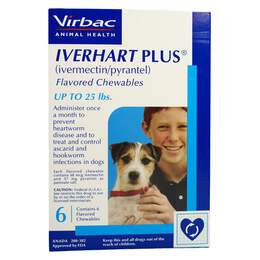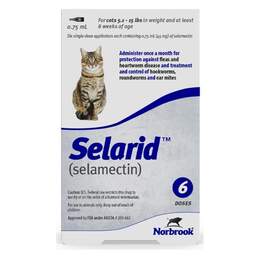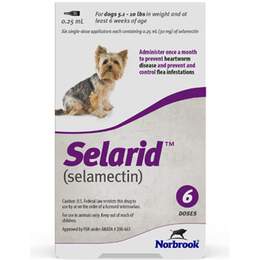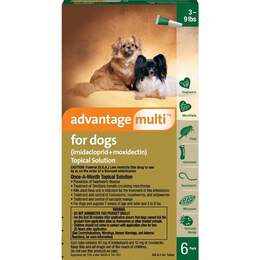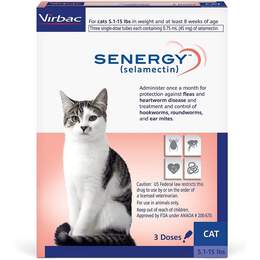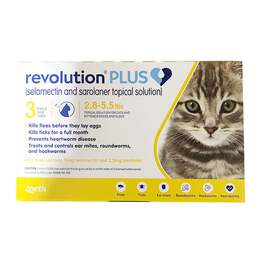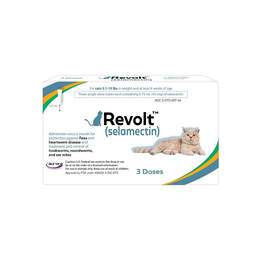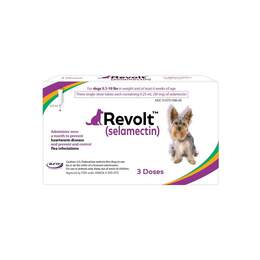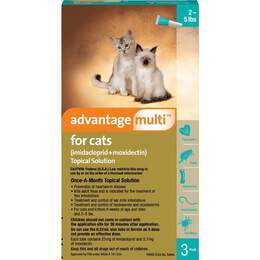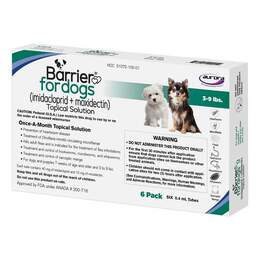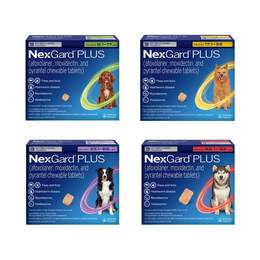Heartworm Preventives
Heartworm Disease – What Is It & What Causes It?
Heartworm disease (dirofilariasis) is a serious, and in some cases fatal, disease that affects dogs, cats, and other mammals. Wild species such as coyotes and foxes that often live in close proximity to urban areas are considered important carriers of the disease. This makes heartworm prevention for all pets essential.
The disease is caused by a blood-borne parasite called Dirofilaria immitis that are transmitted to dogs, and by mosquitoes where they develop into adult heartworms. Once limited to the southern United States, heartworm has spread to all fifty states and the warmer parts of Canada. The highest infection rates are still found in the south and it has also been found in South America, Europe, Australia, and the Middle East.
Pets cannot pass the disease directly to each other, the mosquito serves as an intermediate host for transmission. Therefore, higher instances of heartworm disease often happen during mosquito season.
When pets have heartworm disease, the adult heartworms clog the heart as well as the main blood vessels that lead from the heart, including the pulmonary artery, and affect the valves. This reduces the supply of blood to the other organs in the body, especially the lungs, kidneys, and liver. This reduced blood flow in turn decreases oxygen delivery to these organs and can cause them to malfunction or fail.
Heartworm in Dogs
It may take several years for heartworm-infected dogs to show symptoms of the disease. Often by the time you notice any clinical signs, the disease is very advanced. In addition, the signs of this disease in dogs depend on how many adult worms are present, where they are located, how long they have been in the dog, and how much damage they have done to the heart as well as the lungs, kidneys, and liver.
The obvious sign is coughing, often if your dog has a cough and is not on heartworm medicine such as Heartgard Plus, the first thing the veterinarian will do is a test for heartworm. Additional heartworm disease symptoms include shortness of breath, listlessness, weakness, nervousness, fatigue, lack of stamina, and loss of appetite. Many of these signs become more obvious after exercise.
In addition to a heartworm test, your veterinarian will listen to your dog's chest to check his breathing and heart. If the disease is advanced, the dog could be suffering from congestive heart failure, and their legs and abdomen will be swollen due to the accumulation of fluid in those areas. Weight loss, anemia, and poor condition may also be evident.
It can take several years before dogs demonstrate outward signs of infection. Consequently, the disease is diagnosed mostly in four to eight-year-old dogs. The disease is very seldom diagnosed in dogs less than a year old since the young heartworms (larvae) can take five to seven months to mature after the dog has been infected.
Heartworm in Cats
Dogs are much better hosts for heartworms than cats. But this doesn’t mean they don’t get heartworm disease and don’t need preventative heartworm medication. Most heartworms in cats don’t survive long enough to become adults. Typically, a cat with adult heartworms will have one to three worms, and many cats with heartworm disease will have no adult worms. Even though cats may not have adult worms, and may not be diagnosed with heartworm disease, they are not in the clear. Even immature worms can do real and lasting damage to a cat’s lungs. Heartworm disease in cats is considered heartworm-associated respiratory disease or HARD. In addition, the medication that veterinarians use to treat heartworm in dogs is not appropriate for cats. Prevention is the only way to protect cats from heartworm disease.
Heartworm Life Cycle
The heartworm life cycle goes through several stages. First, the parasite requires a mosquito to play its role as a go-between or intermediate host before it can change from the larval state and ultimately become an adult in the dog. The mosquito is an essential part of the heartworm lifecycle because the larvae cannot be spread without it.
It begins when a female mosquito bites an infected animal and ingests the heartworm microfilariae. These microfilariae remain inside the mosquito and develop further for ten to thirty days before they make their way to the mouthparts of the mosquito as infectious larvae. When the mosquito bites a dog, cat, or another mammal, the infectious larvae enter their bloodstream.
These infectious larvae then migrate into the bloodstream and make their way to the heart and the blood vessels near it. They then mature and become adults, mating and creating microfilariae within six to seven months.
How Long Can My Pet Go Without Heartworm Prevention?
Veterinarians recommend year-round heartworm protection for dogs and cats without skipping a dose. Although mosquitoes are more common in warm weather, they can still bite your pet during winter. A missed dose of heartworm medicine leaves your pet open to becoming infected. Of course, mistakes can happen, and pet parents may forget their pet’s monthly dose.
Most heartworm meds that are meant to be given monthly have a fifteen-day safety factory built-in. this means if you miss a dose, your dog still has protection for up to fifteen days. If you are a few days or even a week or two late, your pet is probably still protected. You can give your pet heartworm medication as usual.
If you realize you have missed a month, go ahead and give them their next monthly dose and restart the monthly schedule. The next time you take your pet to the veterinarian for their annual or semi-annual visit, make sure your veterinarian administers a blood heartworm test.
Prevention is key to protecting your dog or cat from heartworm disease. It is crucial to keep your dog on a monthly heartworm prevention program, or a six-month shot protocol, and test them annually to make sure they remain healthy and heartworm-free. Safe and effective heartworm prevention is available, so no pet should have to suffer through this dreadful disease.



